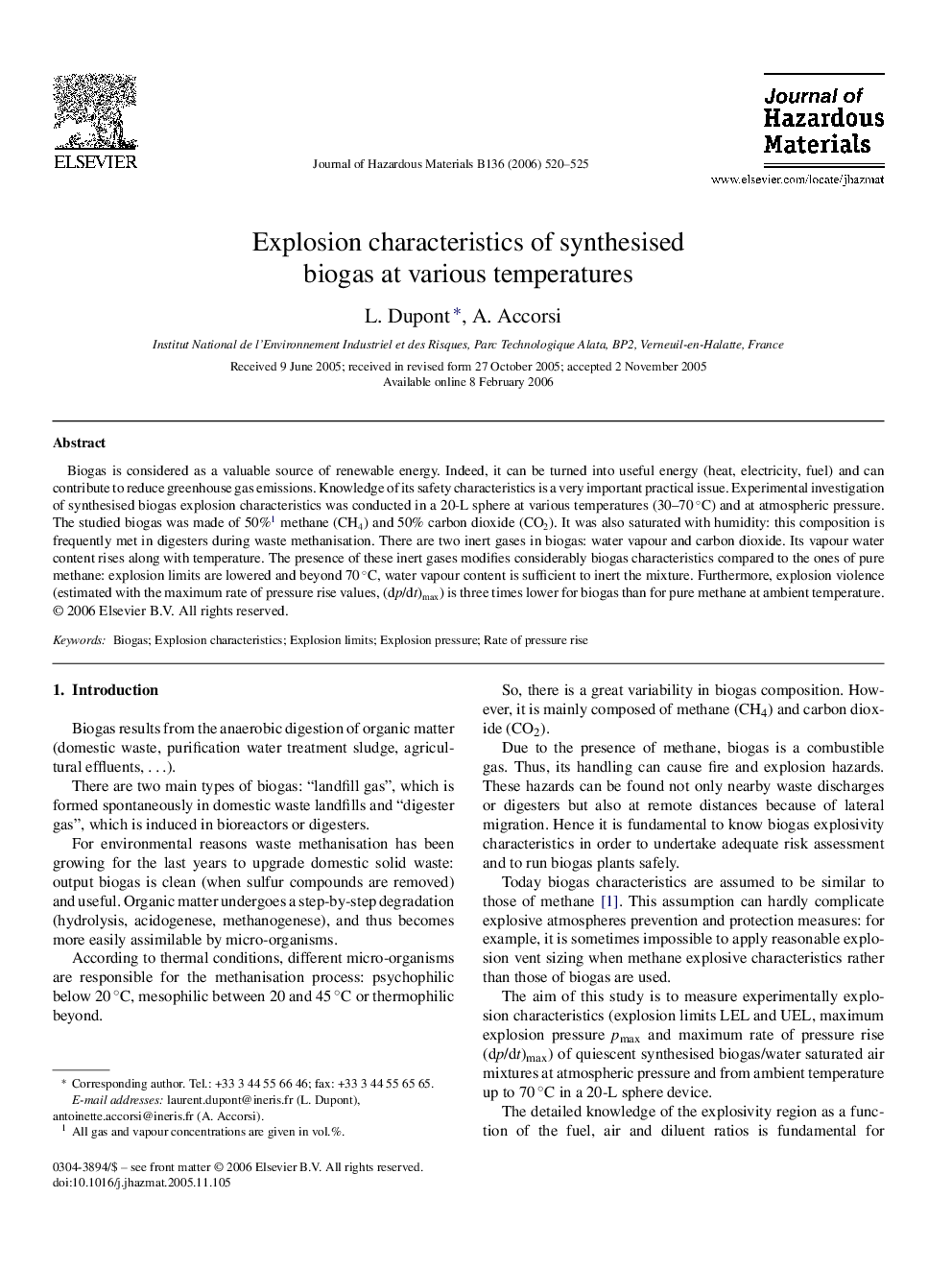| Article ID | Journal | Published Year | Pages | File Type |
|---|---|---|---|---|
| 585565 | Journal of Hazardous Materials | 2006 | 6 Pages |
Biogas is considered as a valuable source of renewable energy. Indeed, it can be turned into useful energy (heat, electricity, fuel) and can contribute to reduce greenhouse gas emissions. Knowledge of its safety characteristics is a very important practical issue. Experimental investigation of synthesised biogas explosion characteristics was conducted in a 20-L sphere at various temperatures (30–70 °C) and at atmospheric pressure. The studied biogas was made of 50%1 methane (CH4) and 50% carbon dioxide (CO2). It was also saturated with humidity: this composition is frequently met in digesters during waste methanisation. There are two inert gases in biogas: water vapour and carbon dioxide. Its vapour water content rises along with temperature. The presence of these inert gases modifies considerably biogas characteristics compared to the ones of pure methane: explosion limits are lowered and beyond 70 °C, water vapour content is sufficient to inert the mixture. Furthermore, explosion violence (estimated with the maximum rate of pressure rise values, (dp/dt)max) is three times lower for biogas than for pure methane at ambient temperature.
